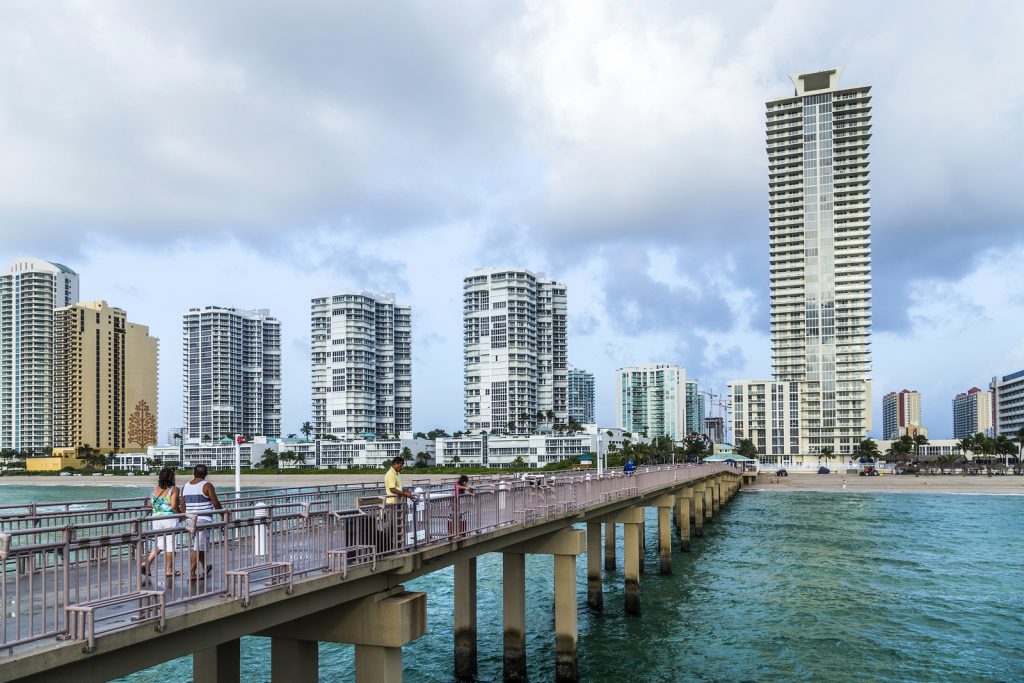Romana King is an award-winning personal finance writer, a real estate expert and speaker. She is the current Director of Content at Zolo.ca, where this article originally appeared.

The real estate market is never dull. Last year started off with a big nervous question: Will the Canadian housing market crash? In 2018, the new year started off with more of a sigh. Analysts across North America came out with various pronouncements of deceleration in activity and pricing, but the overwhelming consensus was that the nation’s real estate landscape would flatten out, even in the hot Toronto and Vancouver markets.
It wasn’t too bold of a prediction. Activity was way down in the summer months of 2017, even as the number of listings was finally growing. This prompted only incremental increases in pricing and a nation-wide expectation of a soft-landing for Canada’s property markets.
This flattening out of the market was happening well before the latest splash of cold water hit the fast-accelerating housing markets. That splash came in the form of amendments to mortgage regulations. Now lenders must qualify new borrowers —and those renewing or renegotiating with a new lender to qualify for a mortgage— using new guidelines. Borrowers are qualified now based on the posted rates, which are typically 200 basis points higher than discounted mortgage rates. These new regulations were announced in October and were officially implemented on January 1, 2018.
What does all this mean for the real estate market in 2018? It means a possible return to the norm —a reemergence of a more boring, stable Canadian real estate market.
Canada’s real estate is actually balanced
According to Robert Hogue, senior economist with RBC Economics, there is “limited downside risks to prices in the near term in Canada” as the majority of housing markets, including Toronto, are “in balance.”
Based on the sales-to-new listings ratio—where 50% is a balanced market—the overall Canadian market appears to be balanced, according to RBC Economics December Monthly Housing Market report. Toronto and Calgary are also in balanced territory while Montreal and Vancouver are still leaning towards a seller’s market.
Source: RBC Economics Monthly Housing Market Update, December 14, 2017
Another way to determine if Canada’s housing markets are levelling off is to examine months of inventory. The number of months of inventory represents how long it would take to liquidate current inventories at the current rate of sales activity. In November 2017, there were 4.8 months of inventory in Canada, down slightly from 4.9 months in October 2017 and the four months of inventory that was recorded in the summer months in 2017. Given that the long-term average is 5.2 months, analysts are predicting that most Canadian market segments are cooling off and returning to a more balanced market where supply meets demand.
Some markets still sizzle
Despite the incremental rise in interest rates in 2017 and the recent mortgage regulation changes—both factors that are expected to cool activity across Canada—some markets are still quite hot.
The Greater Golden Horseshoe area, which includes Toronto, had only 2.4 months of inventory at the end of December 2017. While this is much better than the all-time lows experienced in February and March 2017—when inventory dropped to just 0.8 months—it’s still below the region’s long-term average of 3.1 months.
A surge in deadline activity in Toronto accounted for most of the increase in the last few months of 2017, explains Hogue in his December economic report. “More stringent mortgage lending rules coming into effect in January no doubt prompted many buyers to advance their purchasing decisions.”
But this last-minute year-end activity in 2017 is not likely to continue into 2018. Hogue’s outlook for the New Year suggests that further moderation of home sales activity across Canada will cool any price increases in the upcoming year. “Near-term volatility will be followed by a generalized softening in 2018.”
The least optimistic outlook regarding Canada’s real estate market in 2018 comes from the most unexpected place: The Canadian Real Estate Association. CREA, is the trade association that represents more than 100,000 real estate brokers, agents and salespeople across Canada. In December, CREA cut its home sales forecast for 2018. The association’s analysts cite the impact of tighter mortgage rules, the chill from the Toronto and Vancouver foreign buyers’ tax, as well as on-going affordability issues in the country’s biggest markets.
CREA predicts that activity (that is, the number of actual home sales) will fall 5.3% in 2018. This continued decrease in buying activity, combined with the 4% decline in activity in 2017, prompted CREA to anticipate a 1.4% drop in national average housing prices in 2018. The expected national average housing price for 2017 was $503,400.
If CREA’s prediction turns out to be true, 2018 will be the first year the national housing price will have fallen in Canada since the start of the global recession in 2008.
But the impact of a slowing real estate market will not be felt uniformly across the country. According to CREA estimates sales activity will decline across Canada (by 5.3%), as a well as in B.C. (by 3.7%), in Alberta (by 2.8%), in Saskatchewan and Manitoba (3.8% and 3.9%, respectively) and in New Brunswick and Nova Scotia (by 0.5% and 2.8%, respectively). The two hardest hit provinces will be Ontario, with an almost 10% decline in activity (9.6%) and Prince Edward Island, with a 7.4% decrease in sales activity.
The only provinces predicted to have increased sales activity in 2018—albeit at anemic rates—are Quebec (0.9%) and Newfoundland (1.3%).
What do these predictions mean for average home prices? Volatility. While Newfoundland is expected to have increased sales activity in 2018, its annual price change is expected to drop by 1.9% in 2018. Other provinces with price drop forecasts include Alberta (0.3%) and Ontario (2.2%). The prices in the remaining provinces will either flat-line—like in B.C. and Saskatchewan where 0% price appreciation is expected in 2018—or move up incrementally, like in Manitoba with a 1% average price increase, PEI (0.9%), Nova Scotia (2%) and New Brunswick (1.8%). Only Quebec average prices are expected to beat the national anemic rates, with a 4.2% increase in average sales prices.
What does this mean for buyers?
There are two strong headwinds when it comes to buying activity in 2018: Tighter mortgage lending rules and the threat of higher interest rates.
Because of tighter mortgage lending rules, buyers simply can’t afford to buy the same house as they would have in 2017. This could mean shaving anywhere from 5% to 25% off your maximum house-price budget—although consensus shows it will mean an 18% reduction in your maximum purchase price for one in six borrowers, who put down less than 20%.
One unintended consequence of this forced fiscal responsibility is that more buyers will end up competing for cheaper properties—possibly driving up the prices of condos and townhomes, properties previously considered more affordable.
This push for more affordable housing opportunities could be exasperated as potential buyers try to get into the market before mortgage rates rise. It’s expected that the Bank of Canada will continue with incremental increases to its overnight rate in 2018. While no one anticipates discounted mortgage rates to shoot up to 6%, the posted rates will hit this mark relatively quickly. The increase in mortgage rates will further erode a buyer’s possible house-buying budget, prompting more buyers to pull the trigger before being potentially locked out.
Based on all these factors, we shouldn’t be surprised by an active spring market, particularly in the condo and townhouse market segments.
As a buyer, you’d be wise to secure a mortgage pre-approval before shopping for a home. Don’t just do a quick, online calculation — talk to a mortgage broker. For those buyers struggling to get a loan, consider going through non-prime mortgage lenders. These alternative lenders specialize in buyers turned down by banks, as they allow for more non-traditional income and permit higher debt ratios (up to 50% total debt service ratio, versus the 42% guideline used by the banks). Another option is to increase the length of amortization on the mortgage, which lowers the debt service ratio used to qualify for the loan.
Just don’t expect to get all this help without paying for it. In the past, non-prime lenders have charged higher mortgage rates (to reflect the higher risk of the borrower). Going forward these non-prime lenders may opt to cut the rate but make up the lost revenue by tacking on a fee. The result: Higher risk buyers will end up paying more with fees for amortization periods longer than 25 years, as well as fees for holding less than 20% equity in the house and fees to get access to rates low enough to allow them to qualify for the mortgage.
What does this mean for sellers?
For sellers across Canada, it’s time to reset expectations. Gone are the days when you could expect to sell your home in a week or less (for more money than your neighbour, who only sold a month ago). Buyers are struggling to afford what’s out there and the result is a rise in inventory and a drop in sales activity.
In the last few years, a potential buyer ended up having to compete against other interests, such as investors, speculators and foreign buyers. Those in the market to make money have been pulling out—waiting for more certainty. That means fewer buyers in the market and fewer sales. The drop in sales activity will prompt price corrections and eventually, the market should stabilize in balanced territory. The investors and speculators may come back, at this point, but until then sellers need to readjust their expectations. The upside is that even a 10% to 15% drop in prices won’t reset a home’s value to pre-2016 price levels.
To stay competitive, consider scrutinizing current sales data for your street and neighbourhood. Walk through all open houses in your community, to get an idea of what homes look like before they sold (you can still get this sold data from your real estate agent). Finally, discuss with your real estate agent competitive pricing strategies.
What does this mean for current homeowners?
If you already own a home it’s time to do a little jig just don’t spend too long celebrating because it’s not all smooth sailing for current homeowners in 2018.
The biggest hurdle will be mortgage renewal. According to Bank of Canada analysis, half of all current mortgages will “reset” in 2018. What does this mean? It means 47% of mortgage holders will need to renew their mortgages; by 2021 another 31% of mortgages will need to renew and another 22% of that.
This surge of renewals will mean that these homeowners will have to make some tough decisions: Renew with your current lender and skip the mortgage stress test or shop around for a better rate and be subjected to the mortgage stress test.
For those homeowners who were proactive about paying off their mortgage debt and building up the equity in their home, this decision will be easy. You will qualify for a great rate whether you stay with your current lender or shop around.
But homeowners who refinanced and added more debt to their mortgage loans, or those that weren’t proactive about building up the equity in their home, may feel the pinch. Those that choose to stay with their current lender may find the rates are not as competitive, but may not have options elsewhere, as they’ll be subject to the new mortgage stress test.
Homeowners looking to obtain a Home Equity Line of Credit (HELOC) may be surprised at how much smaller this revolving loan will be in 2018. In 2017, anyone applying for a HELOC was stress-tested using the posted 4.89%. As of January 1, 2018, this rate increased to 5.7% (and will continue to increase as rate rise).
It’s worse if you’re a homeowner looking to refinance. Those looking to consolidate their debt through a refinance in 2018, may be surprised by the less than attractive mortgage rates offered to them, or the inability to qualify for the loan amount needed. Typically, those that need to refinance have debt ratios that are above average and this will be very problematic when trying to qualify under the new mortgage rules.
What does this mean for investors?
If you’re still in the market to buy a rental property, hats off to you. Many real estate investors were scared away in 2017, partly because of the crazy spring market and partly because of market uncertainty due to regulatory changes. But with the real estate market rebalancing and prices starting to level off of slowly come down, many investors may get back into the market.
While single-family detached homes are still golden gooses, it’s hard for small landlords and large institutional investors to earn a profit on this building type. The purchase price is often too high to make rental numbers work, unless you can secure more than one rental in the home and this comes with its own costs and headaches.
For those investors choosing to skip the single-family home and look at condos and townhomes, keep in mind that competition may increase in these segments quite substantially in 2018. More first-time buyers may be pushed into this pricing segment and this would mean even more competition for these units.
Old rules of thumb remain, however. Try to find units that are well capitalized (lower purchase price, higher rental yield) and, where possible, look for neighbourhoods that support renters, such as urban centres, university and hospital communities as well as commercial complexes that offer newly built retail and office space.
Any investor thinking of buying in 2018, should first start with a financial plan and a budget. Then talk to your accountant and mortgage broker to make sure the numbers work. If all this checks out and you’re lucky enough to find a property, then 2018 may be the year for you to become a landlord (and the real work begins).

